skype:
skype:

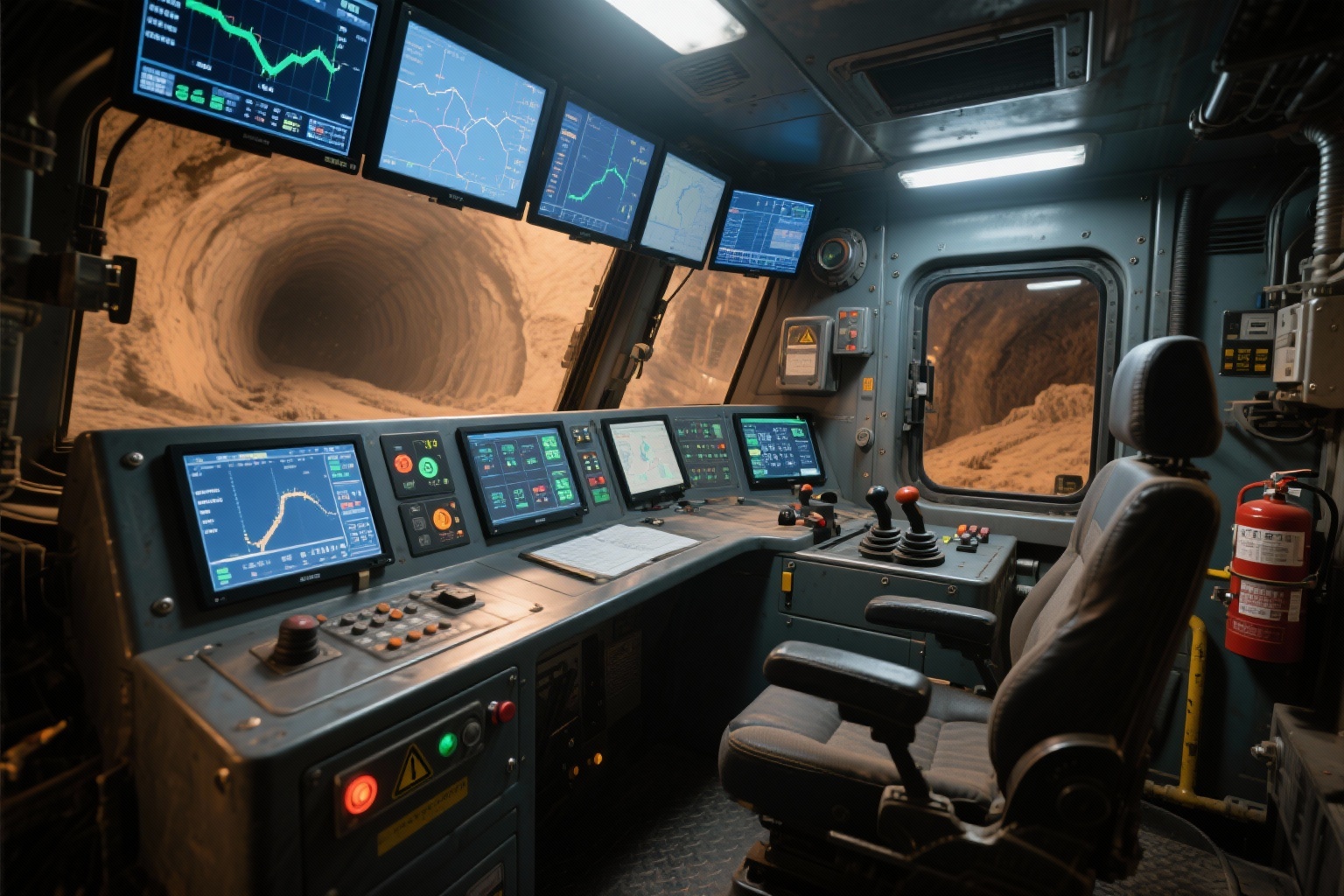
Selecting the wrong LCD display for underground mining equipment can lead to significant production losses and even safety incidents. The subterranean environment presents an extreme ordeal for electronics, where standard commercial or even conventional industrial-grade screens are often inadequate. This guide serves as your ultimate resource, taking you from analyzing environmental challenges to vetting suppliers, to help you choose the most robust and reliable "eyes" for your critical machinery.
Underground mines represent a "perfect storm" of hostile conditions for electronic equipment, where LCD screens must withstand multiple severe challenges:
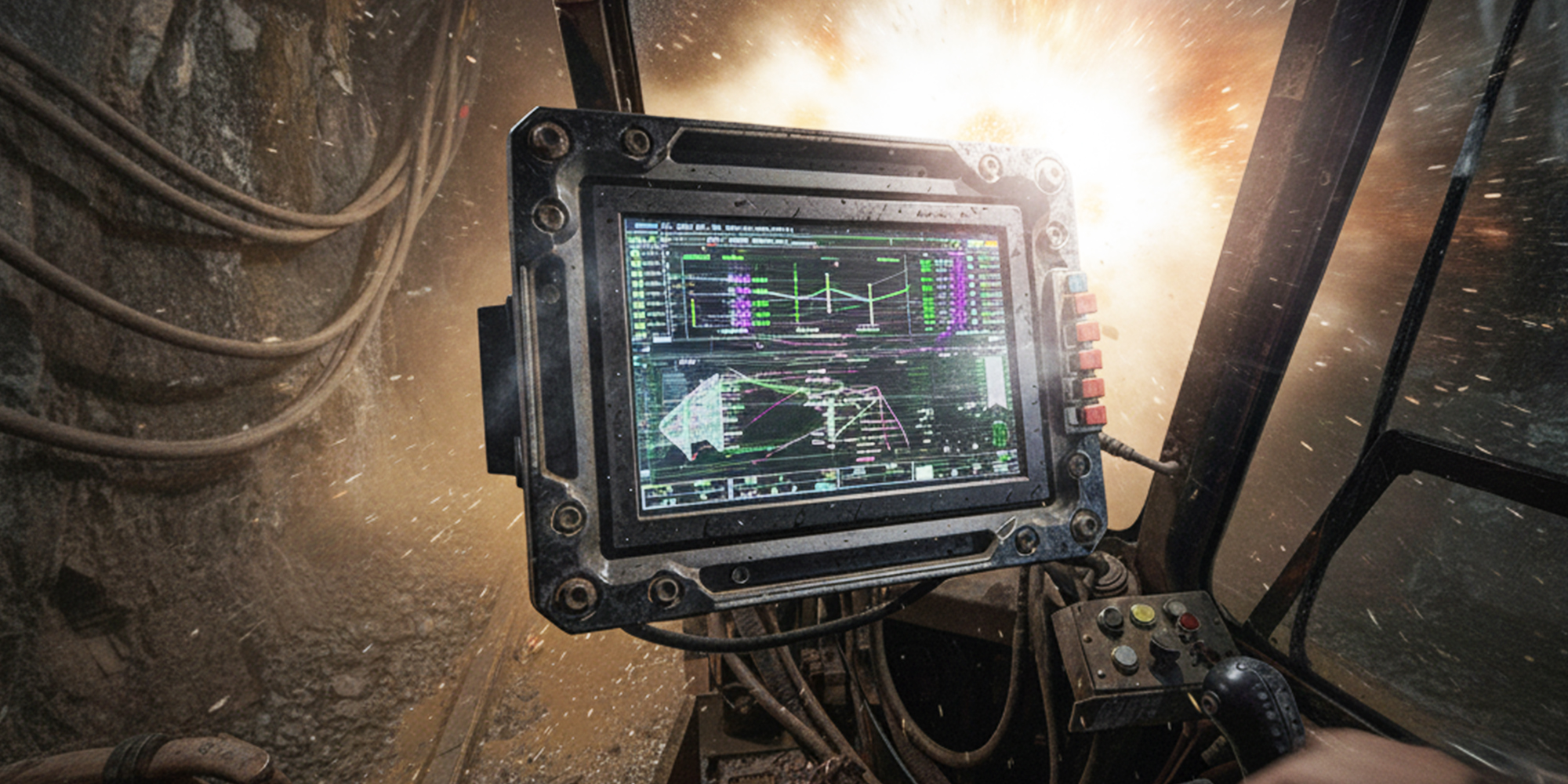
Intense Mechanical Vibration and Shock: Continuous jostling from equipment movement and shockwaves from blasting operations are transmitted directly to the display. This can loosen internal connectors, damage backlight modules, and destabilize liquid crystals, leading to flickering, ghosting, or complete failure.
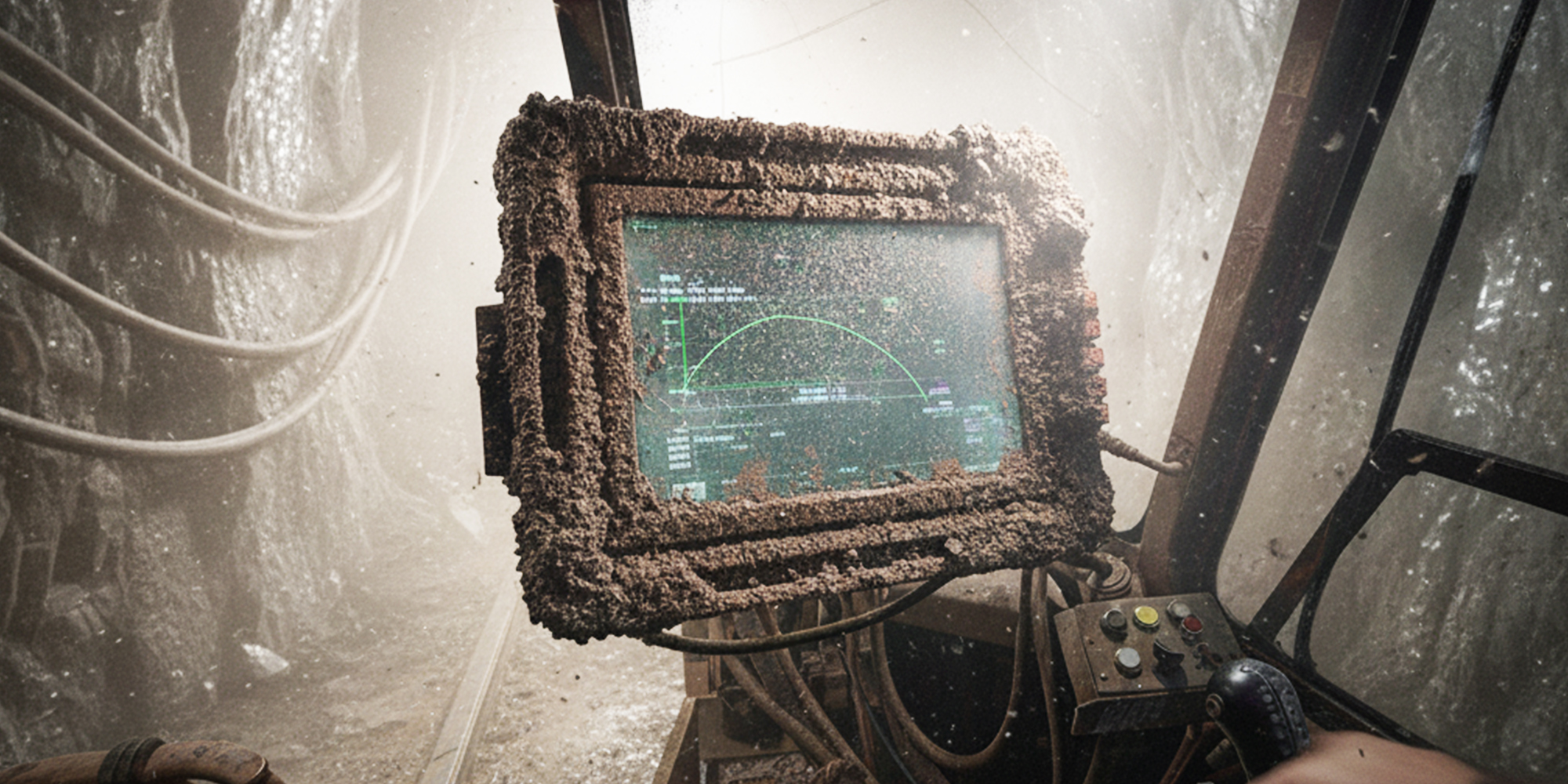
High Concentrations of Dust and Moisture: Conductive metal dust, if it infiltrates the screen's interior, can easily cause short circuits. Non-conductive rock dust accumulates in ventilation holes and interfaces, impairing heat dissipation and accelerating wear. Meanwhile, the high humidity levels underground promote internal condensation, which corrodes circuit boards and components.
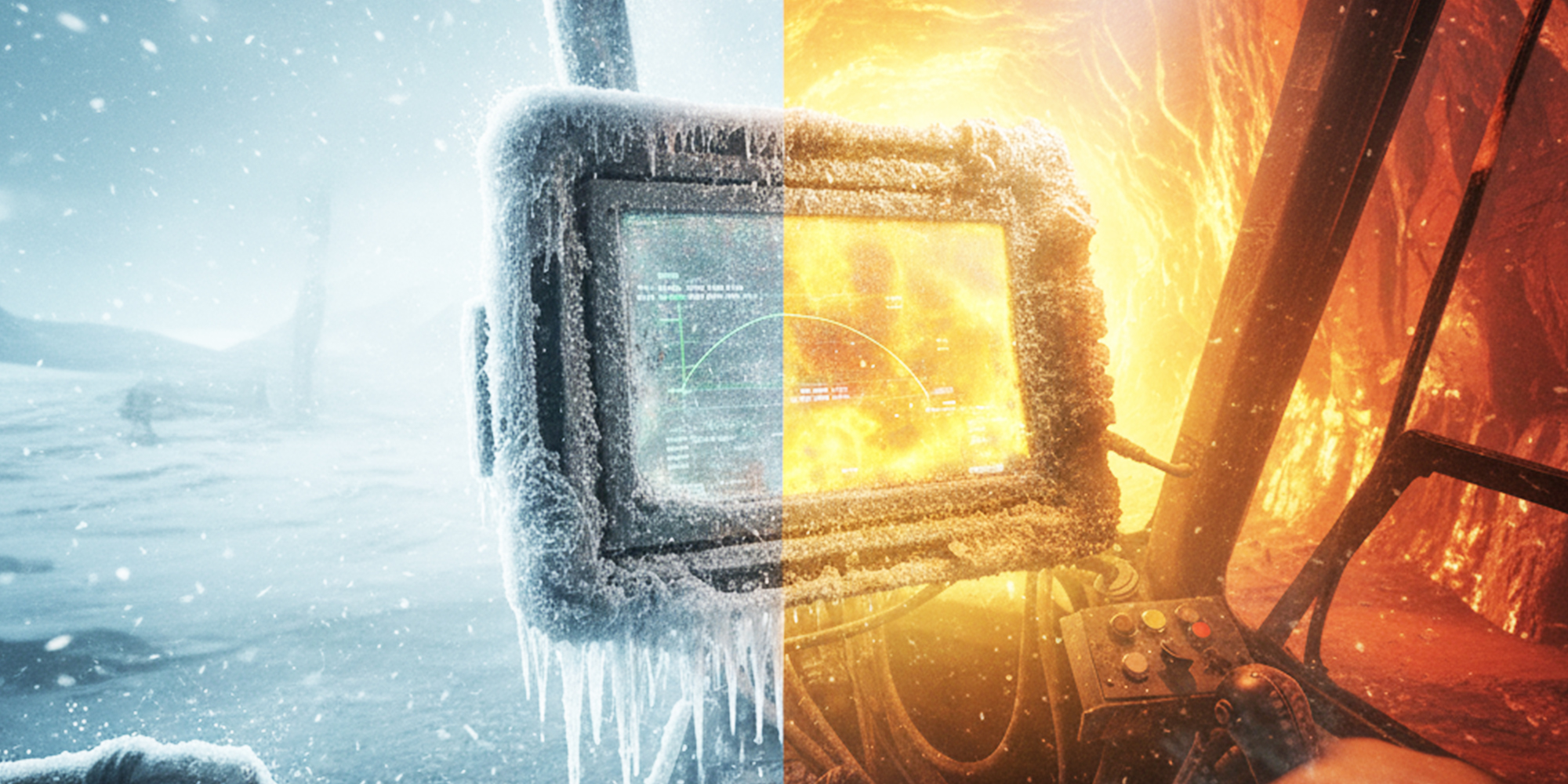
Extreme Temperature Fluctuations: A display may start up in sub-zero surface temperatures and then face intense heat underground from both equipment-generated heat and geothermal energy. Low temperatures slow the response time of the liquid crystals, causing motion blur, while high temperatures accelerate the aging of LED backlights and electronic components.
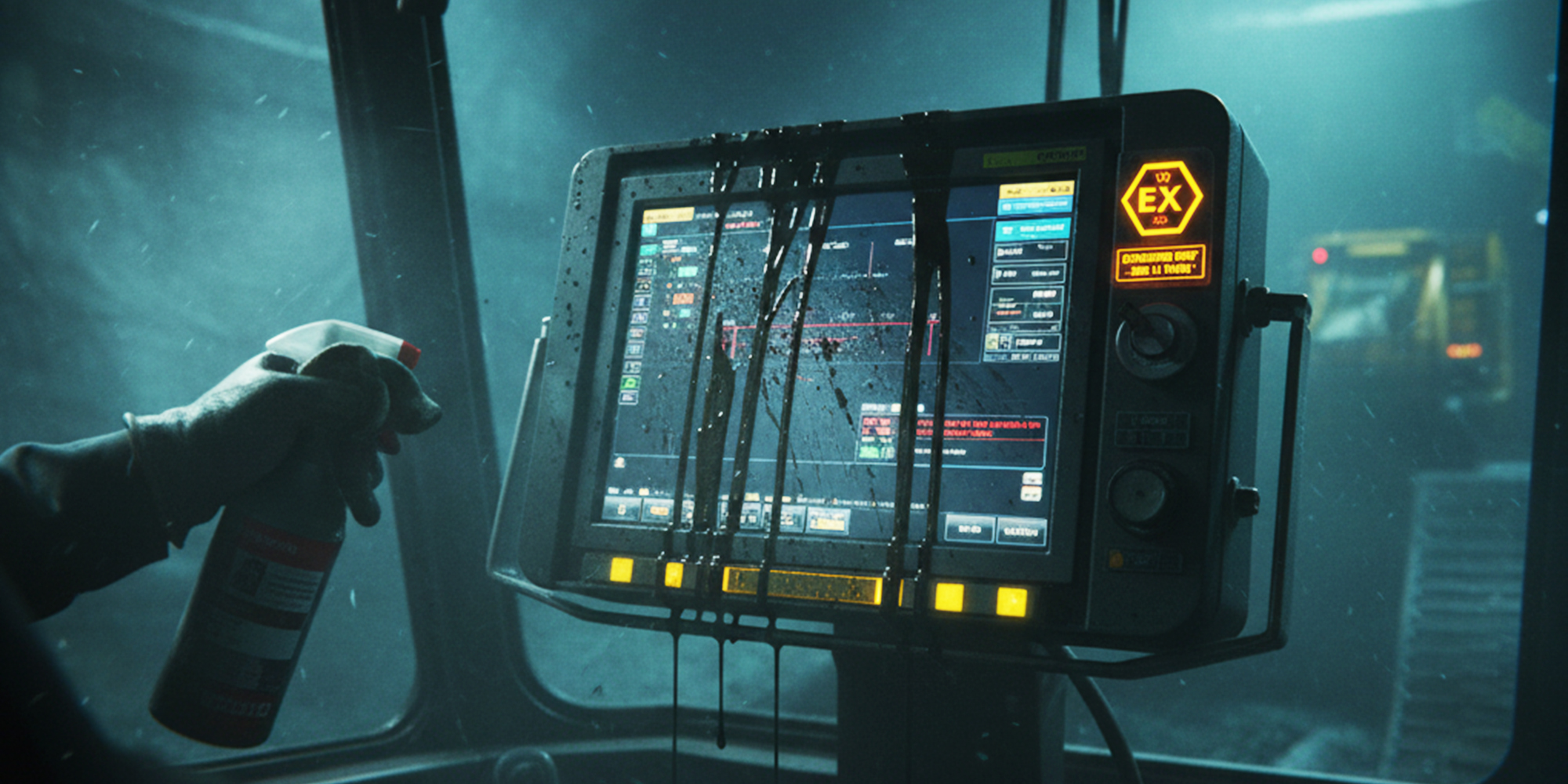
Potential Chemical Corrosion and Explosion-Proof Requirements: Screen surfaces may come into contact with hydraulic fluids, lubricants, and cleaning chemicals. Furthermore, in areas with combustible gases like methane or coal dust, displays must carry stringent explosion-proof certifications to ensure they cannot become an ignition source.
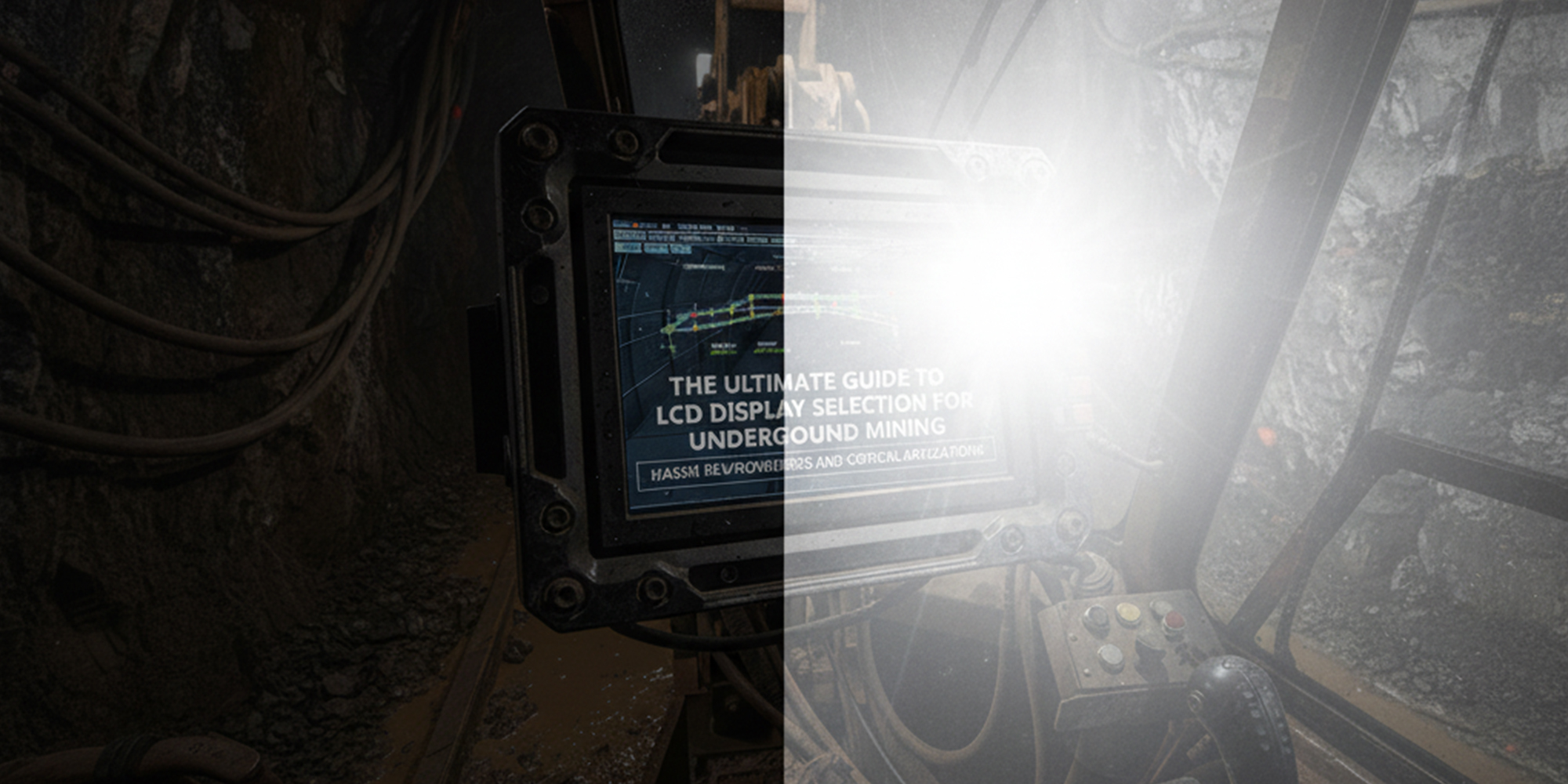
Demanding and Complex Lighting Conditions: The environment shifts rapidly from near-total darkness in tunnels to being directly illuminated by powerful vehicle headlights. This places extreme demands on a screen's brightness and anti-reflective capabilities, as poor readability can lead to operator error and significant risk.
Therefore, selecting LCD displays for mining applications must prioritize ruggedness, reliability, and readability above all else, with environmental adaptability at the core of the decision.
These core parameters directly determine the display's survivability and reliability under harsh conditions. The following are the key metrics that must be prioritized when selecting a display for underground mining.
2.1 Ruggedness & Protection: The Foundation of Survival
IP Rating: The Mandatory Benchmark for Dust & Water Resistance
The IP (Ingress Protection) rating is an international standard crucial for mining applications:
IP65 Protection: This is the baseline requirement. The "6" signifies complete protection against dust ingress, even during prolonged exposure to high-concentration dust. The "5" indicates protection against low-pressure water jets from any direction, suitable for areas with splashing risks.
IP66/IP67 Protection: For equipment that may be cleaned with high-pressure water jets or operates in extremely wet conditions, a higher rating is advised. IP66 resists powerful water jets, while IP67 allows the unit to be temporarily immersed in up to 1 meter of water for 30 minutes without damage.
Vibration and Shock Resistance
Vibration and shock are primary causes of display failure in mining environments:
MIL-STD-810G Certification:This U.S. military standard is an authoritative benchmark for evaluating environmental adaptability. Displays certified to this standard can withstand the sustained low-frequency vibrations and high-intensity shocks from blasting common in mining.
Reinforced Structural Design: High-quality mining displays should feature reinforced mounting brackets, vibration-proof connectors, and fortified housing to ensure stable operation under constant vibration.
2.2 Visibility & Optical Performance: The Key to Efficiency
Brightness and Readability
Brightness is the foremost factor affecting readability in the complex lighting of a mine:
High Brightness Requirement: Displays in vehicle cabs require a brightness ≥1000 nits to remain clearly visible under direct, strong light. Displays in fixed locations like control rooms should achieve ≥500 nits for easy readability under various lighting conditions.
Luminance Uniformity: High-quality displays should maintain a luminance uniformity of ≥85%, preventing noticeable light and dark patches that strain vision and hinder information recognition.
Optical Bonding
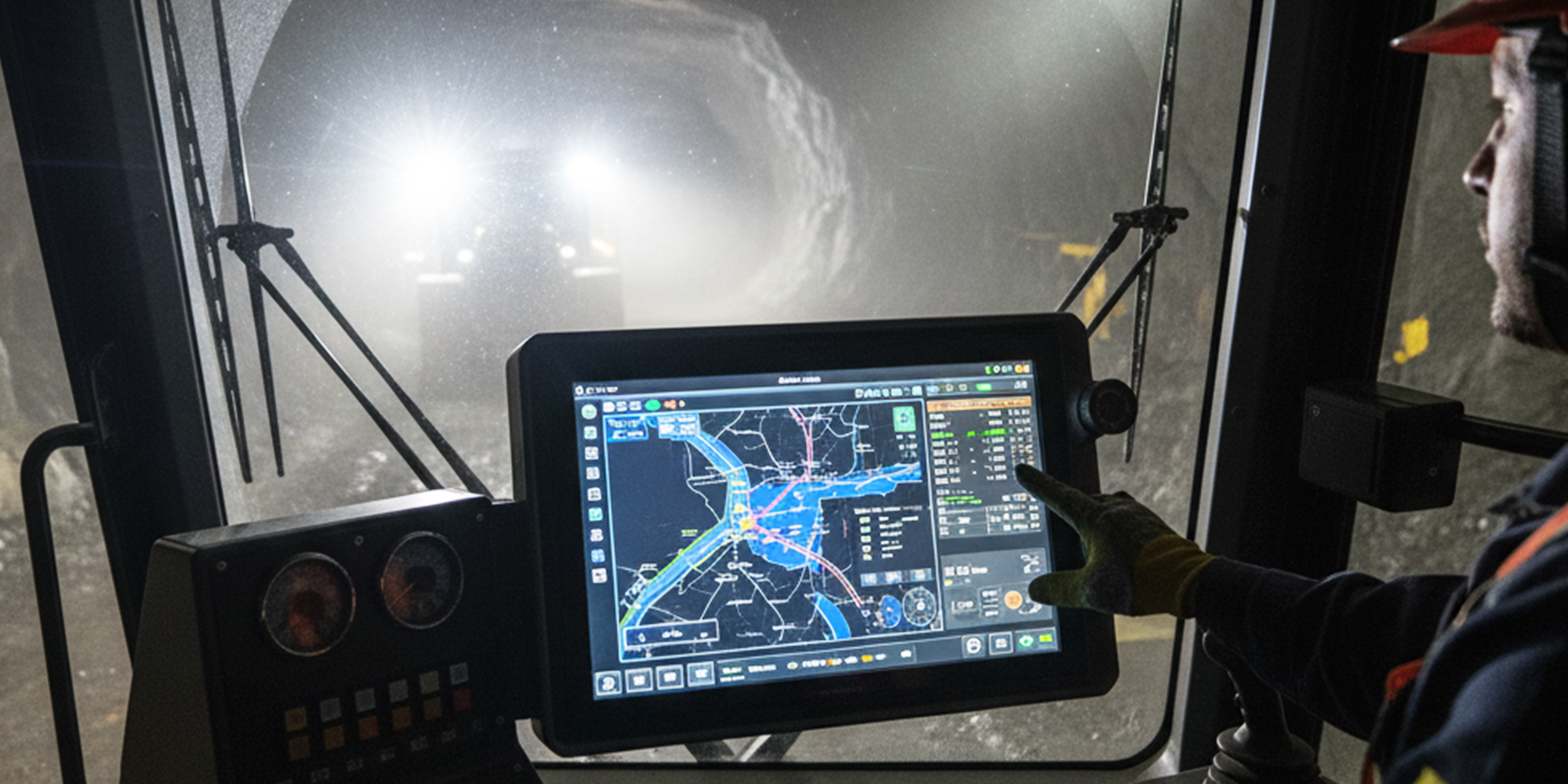
This technology is a critical breakthrough for enhancing viewability in bright light:
Technology Principle: A traditional air gap between the cover glass and LCD panel creates about 8% reflectivity. Optical bonding fills this gap with an optical-grade adhesive, reducing reflectivity to less than 1%.
Practical Benefit: This drastic reduction in glare means operators can read the screen clearly without maxing out the brightness, enhancing visibility while extending backlight life and reducing power consumption.
Viewing Angle Performance
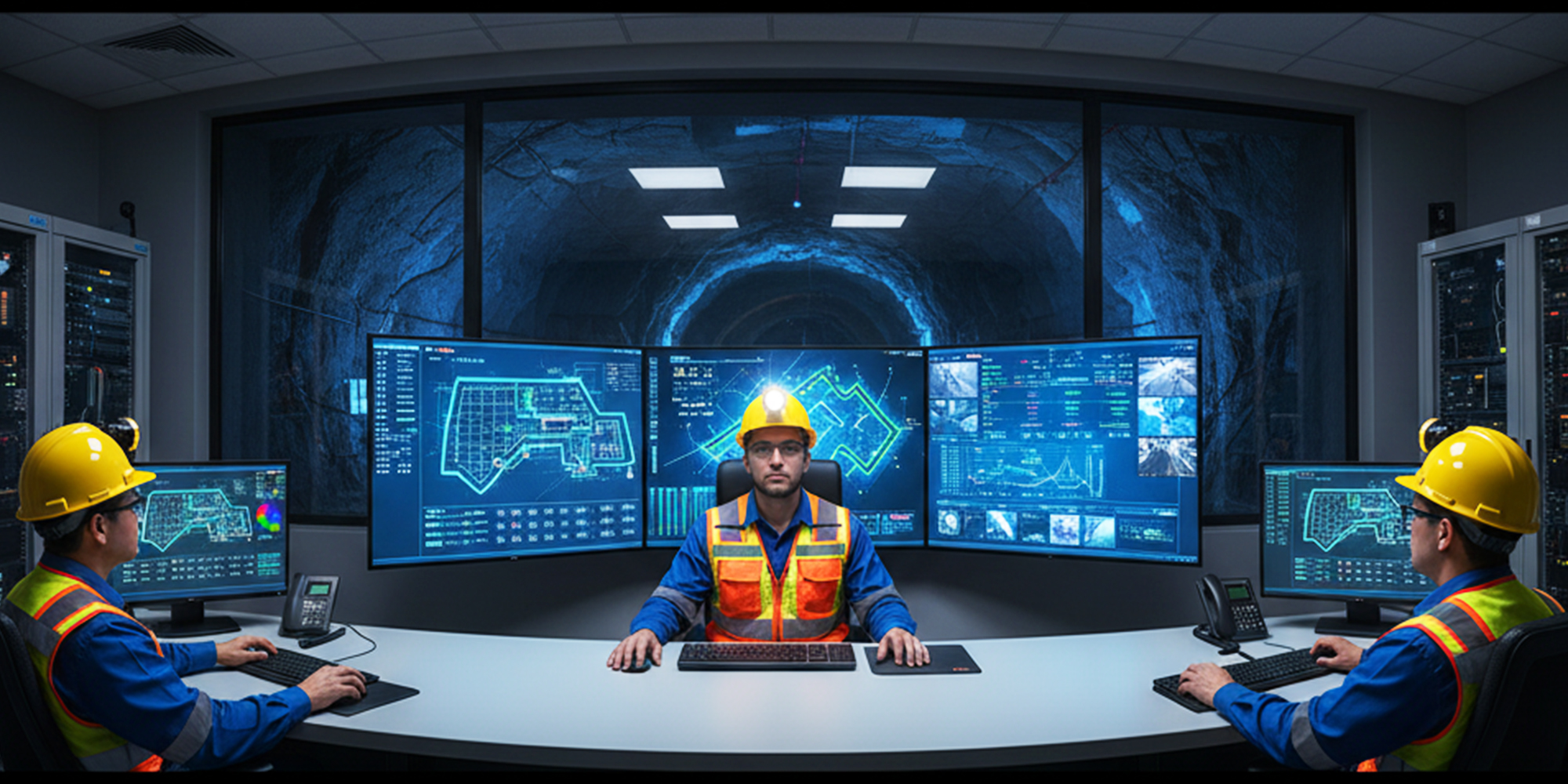
IPS Technology Advantage: Displays using IPS (In-Plane Switching) technology offer wide viewing angles up to 178 degrees, ensuring no significant color shift or contrast loss from any viewing angle. This is particularly important in control rooms where multiple people need to view the screen simultaneously.
2.3 Touch Performance & Interaction: Human-Centric Design
Industrial Projected Capacitive (PCAP) Touch
The preferred touch solution for modern mining equipment:
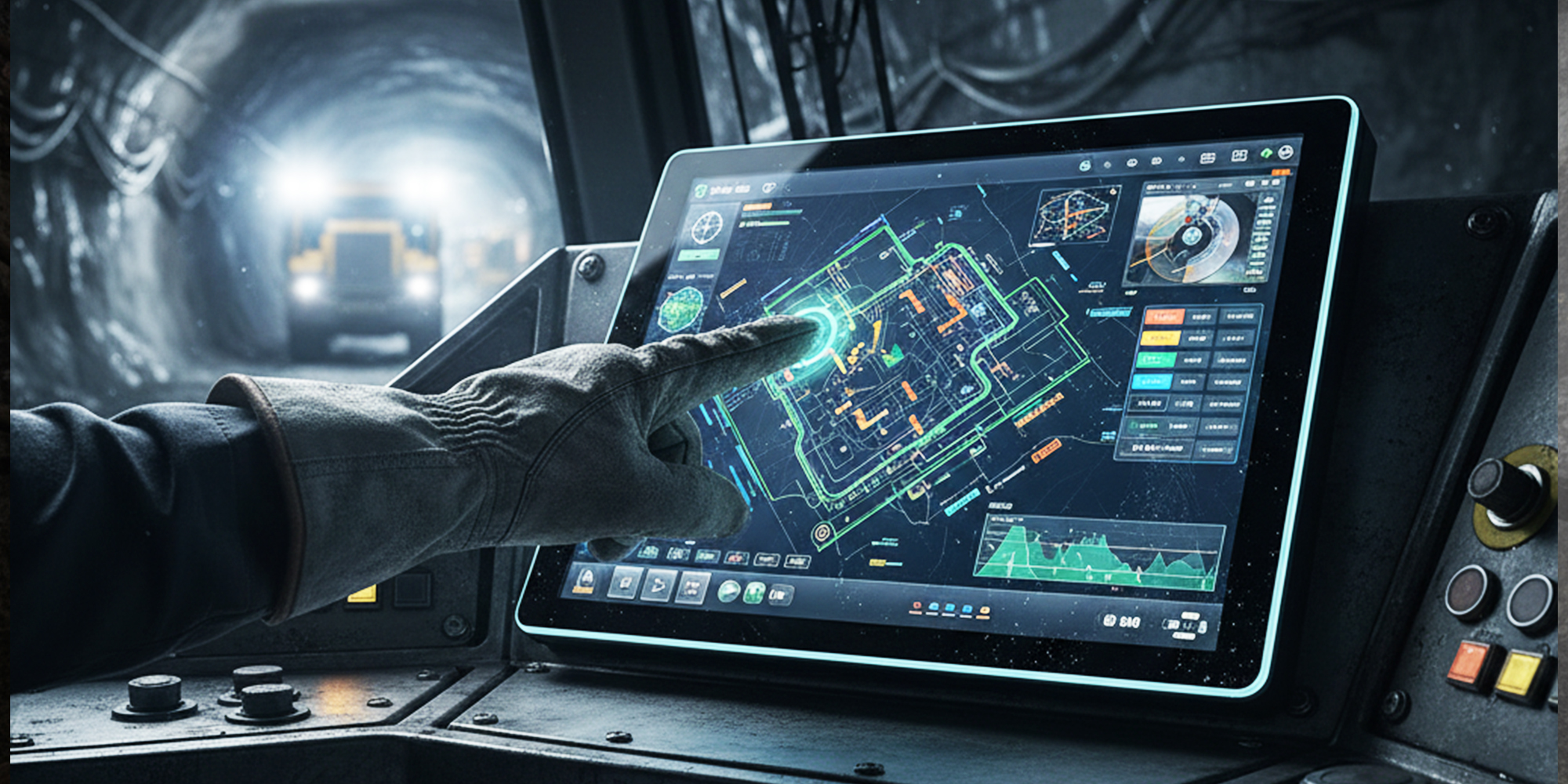
Glove Touch Capability: Professional industrial-grade capacitive screens support accurate operation through work gloves up to 3mm thick, addressing the necessity of wearing protective gear.
Palm/Palm Rejection Technology: Advanced touch controllers can distinguish between intentional touches and accidental contact from palms, moisture, or dust, effectively preventing false triggers.
Wet Hand Operation: The screen remains accurately responsive in damp conditions, ensuring operational reliability across various scenarios.
Alternative Comparison
Infrared (IR) Touchscreen: While offering good impact resistance, IR screens are prone to failure in dusty environments if the border-mounted emitters and receivers are obscured, making them unsuitable for high-dust mining applications.
Resistive Touchscreen: An increasingly obsolete technology. Its low sensitivity, susceptibility to wear, and requirement for firm pressure make it inadequate for modern mining equipment operation.
Wide Operating Temperature Range
Temperature swings in a mine are highly challenging:
Temperature Range Requirement: A high-quality mining display should have an operating temperature range of -30°C to +80°C, with an even wider storage range. This ensures stable performance from a cold surface startup to operation in a hot underground environment.
Thermal Management Design: Professional wide-temperature displays employ both low-temperature heating (e.g., via PTC heater) and high-temperature heat dissipation to ensure the LCD responds correctly at temperature extremes.
Reliability Metrics
MTBF(Mean Time Between Failures):This metric reflects long-term product reliability. Industrial LCDs should have an MTBF ≥50,000 hours, equating to stable operation for at least 5.7 years running 24/7.
Backlight Lifetime: High-quality displays using LED backlights can offer a lifespan of 50,000-100,000 hours, ensuring no frequent replacements are needed during the equipment's service life.
Environmental Certifications
Beyond the basic IP rating, professional mining displays should possess:
Sunlight Readable Solutions
A true professional-grade mining display uses an integrated approach for outdoor viewability:
High-Brightness Backlight: Specially designed LED backlight systems provide sufficient light output.
Anti-Reflective Coating: Multi-layer AR coatings applied to the glass effectively reduce surface reflections.
Adjustable Brightness: Supports 0-100% brightness adjustment to adapt to different lighting conditions.
Reinforced Glass Protection
Chemically Strengthened Glass: Surface hardness can reach 9H, offering scratch resistance over 5 times greater than standard glass.
Shatter-Proof Design: A laminated structure ensures that even if the glass breaks, it does not shter into pieces.
In underground mining environments, LCD display requirements vary significantly across different equipment types. Below are detailed selection guidelines for major equipment categories, including recommended size ranges, to support precise decision-making.
3.1 Trackless Equipment Cabs (LHDs, Haul Trucks, etc.)
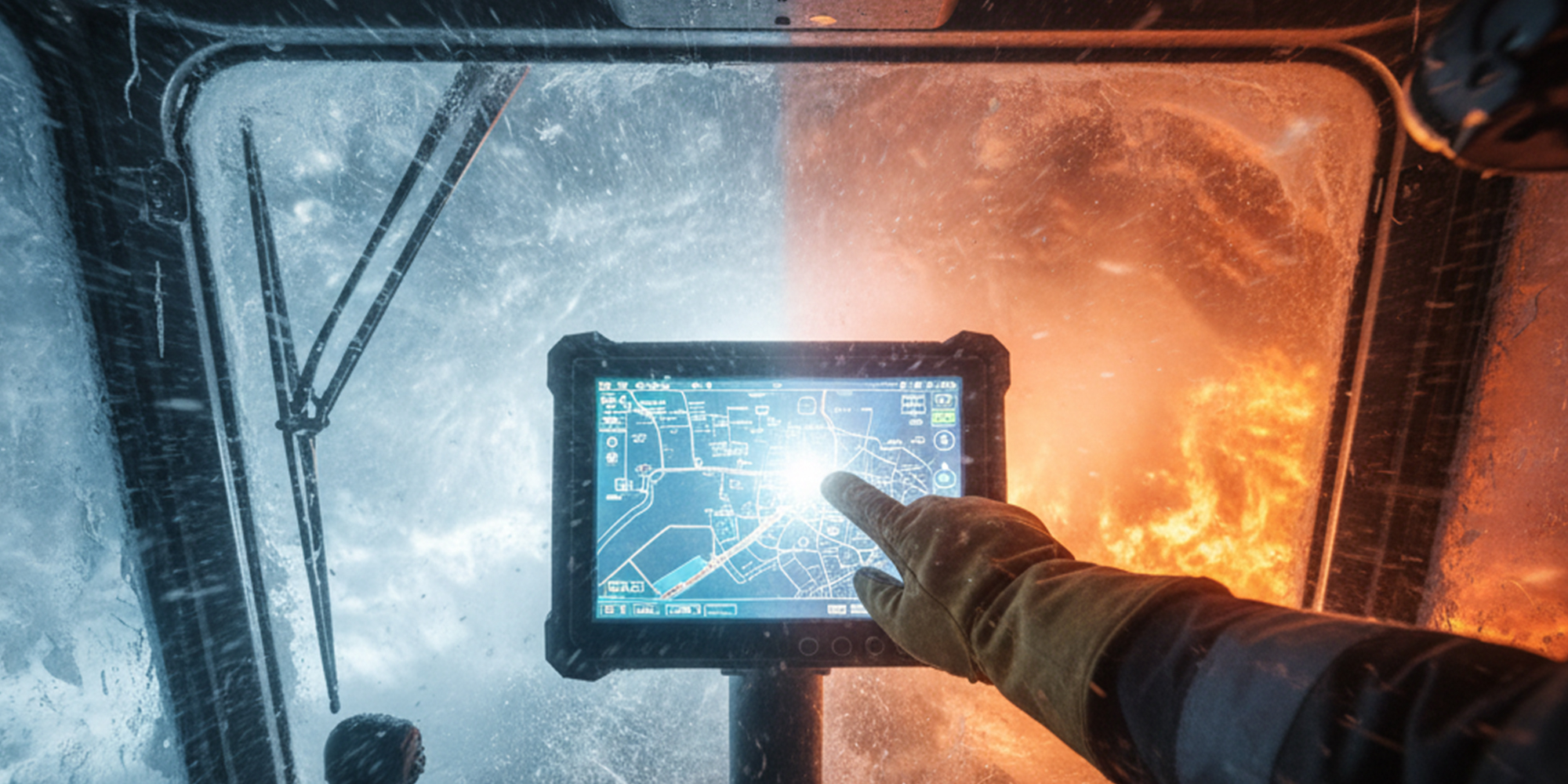
Core Requirement Analysis
Trackless equipment cabs represent one of the most demanding application scenarios in mining. Equipment faces intense vibration, drastic temperature swings, and direct high-intensity light during operation, while personnel typically need to operate while wearing gloves.
Key Parameter Recommendations
Recommended Size: 8-15 inches
Compact LHDs: 8-10 inches
Large Haul Trucks: 12-15 inches
Brightness: ≥1000 nits
Ensures clear visibility even under direct, high-intensity lighting underground.
IP Rating: IP65 or higher
Effectively prevents dust ingress and protects against water jets.
Vibration/Shock Standard: MIL-STD-810G
Withstands continuous vibration from vehicle movement and shocks from blasting operations.
Touch Technology: Industrial Projected Capacitive (PCAP)
Must support gloved-hand and wet-touch operation.
Operating Temperature: -30°C to +80°C
Adapts to extreme temperature variations from the cold surface to hot underground conditions.
3.2 Central Control Rooms & Remote Operating Stations
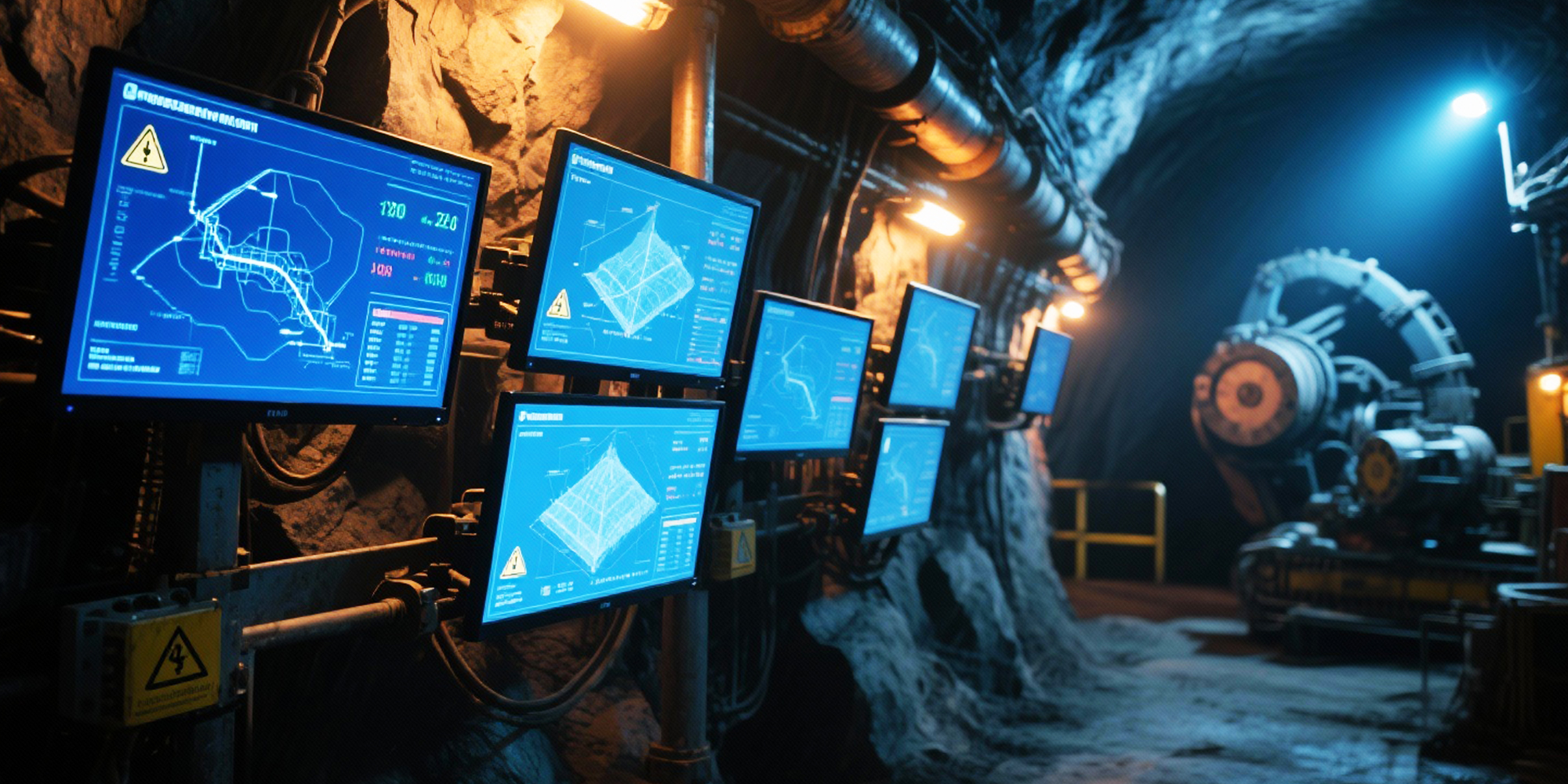
Core Requirement Analysis
As the operational "brain" of the mine, the central control room processes vast data streams and displays multiple information sources. Screens require high resolution, excellent color accuracy, and unwavering stability for long-term operation.
Key Parameter Recommendations
Recommended Size: 24-55 inches
Single-operator workstations: 24-32 inches
Video wall display units: 46-55 inches
Resolution: 4K UHD (3840×2160)
Guarantees crisp detail visibility across multiple windows and data points.
Panel Technology: IPS
Provides 178-degree wide viewing angles and accurate color reproduction.
Reliability: MTBF ≥70,000 hours
Supports reliable 24/7 continuous operation.
Bezel Design: Ultra-narrow Bezels
Enables a near-seamless visual experience in multi-screen video wall configurations.
Brightness: ≥500 nits
Suitable for the varied lighting conditions within a control room.
3.3 Underground Fixed Sites (Refuge Chambers, Pump Stations, Electrical Rooms)
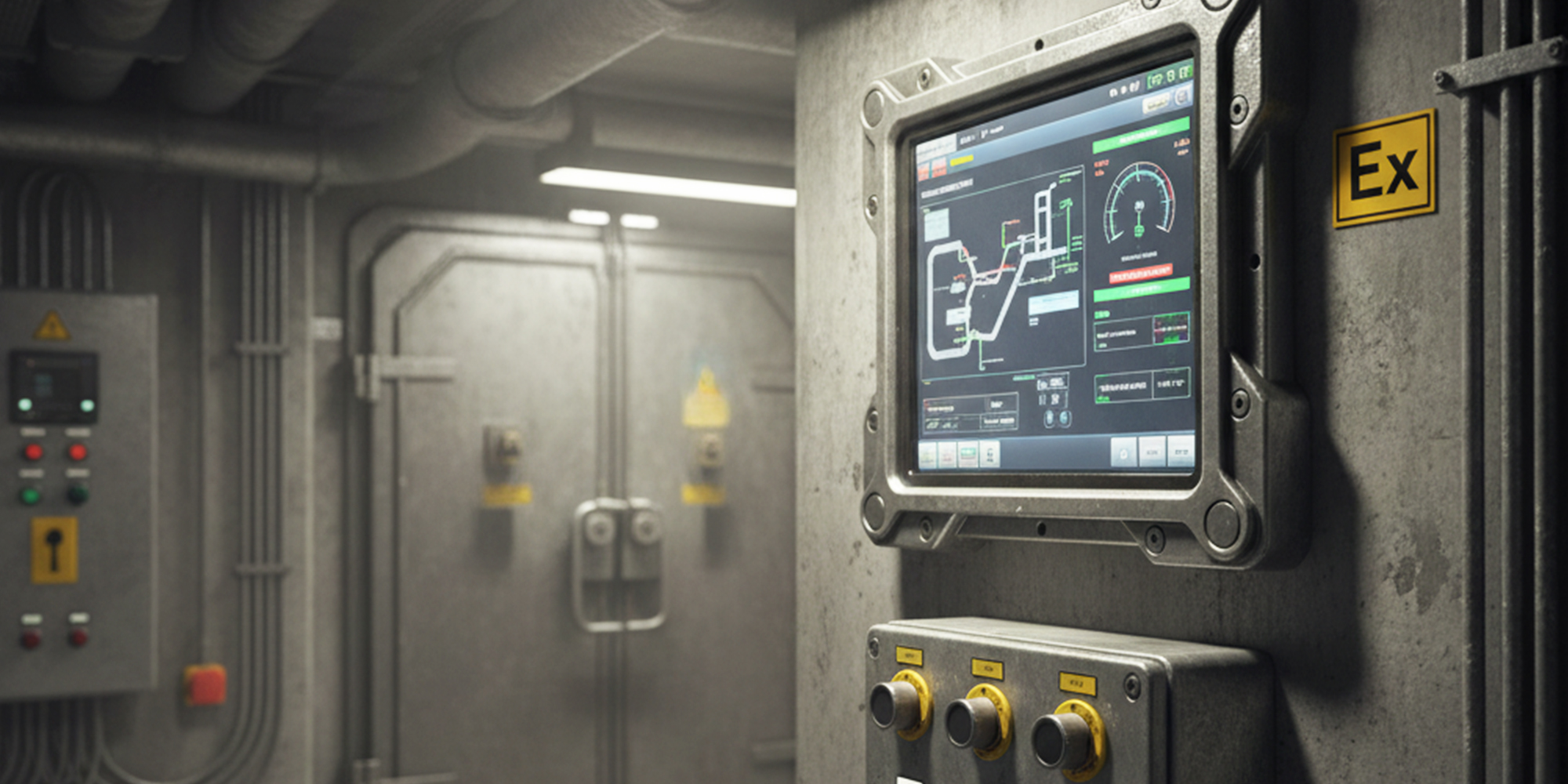
Core Requirement Analysis
These locations often feature harsh environments, potential explosive atmospheres, and difficult access for maintenance. Displays demand the highest levels of protection, reliability, and guaranteed functionality during emergencies.
Key Parameter Recommendations
Recommended Size: 10-21 inches
Built-in displays for refuge chambers: 10-15 inches
Monitoring screens for pump stations/electrical rooms: 17-21 inches
IP Rating: IP66/IP67
Complete dust ingress protection and ability to withstand powerful water jets or temporary immersion.
Explosion-Proof Certification: ATEX / IECEx
Mandatory for use in designated hazardous areas.
Optical Technology: Optical Bonding
Eliminates internal reflection, maintaining optimal readability under emergency lighting.
Interaction Method: Physical Buttons or High-Sensitivity Touchscreen
Accommodates operators potentially wearing heavy protective gloves.
3.4 Portable & Handheld Devices (Gas Detectors, Maintenance PDAs)
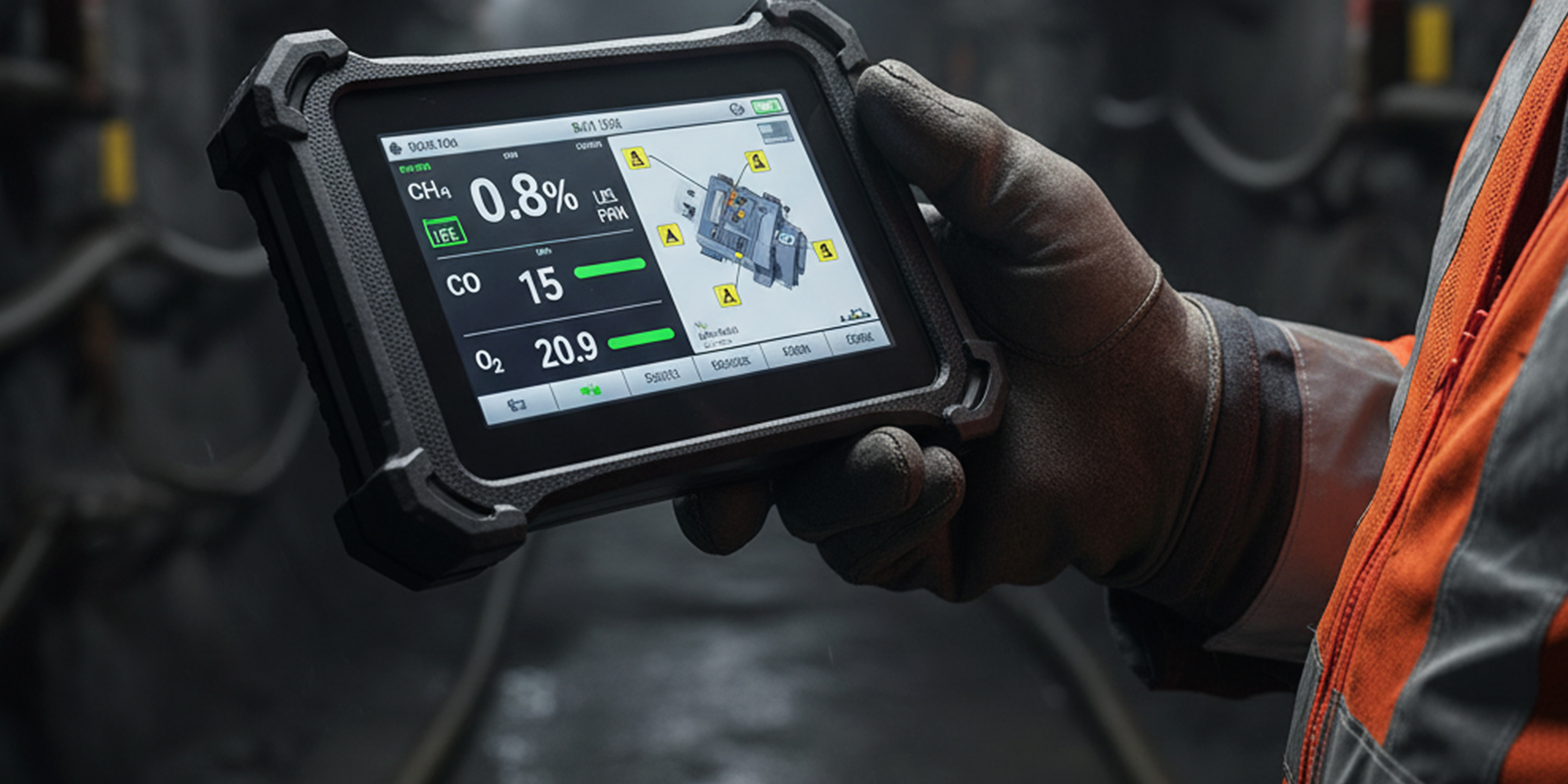
Core Requirement Analysis
Portable devices must balance performance with mobility while enduring frequent transport and accidental drops. Low-power design is critical for extending battery life.
Key Parameter Recommendations
Recommended Size:5-7 inches
Gas detectors:5-6 inches
Maintenance PDAs:6-7 inches
Brightness:≥500 nits
Ensures readability under various underground lighting conditions.
Ruggedness: Passes 1.2-meter Drop Test
Withstands accidental impacts and drops common in daily use.
IP Rating:IP67
Protects against dust ingress and temporary submersion.
Power Optimization: Intelligent Backlight Control
Automatically adjusts brightness based on ambient light to extend battery life.
Touch Technology: Capacitive Screen with Palm Rejection
Enables accurate operation within confined spaces.
Industrial Communication Protocol Integration
Modern mining equipment demands increasingly sophisticated communication capabilities. The display is no longer just a terminal; it's a crucial node for system interaction.
CAN Bus Integration: This is a core requirement for mining vehicles. By integrating a CAN bus interface, the display can communicate directly with the vehicle control system, showing real-time engine parameters, fault codes, speed, and other critical data, while also receiving control commands for deep human-machine interaction (HMI).
PROFINET Industrial Ethernet: In highly automated fixed sites, like central control rooms or pump station monitoring systems, PROFINET provides high-speed, deterministic data transmission, ensuring the real-time nature and accuracy of monitoring data.
NMEA 2000 Maritime Standard: While primarily used in maritime applications, its design philosophy regarding device interoperability and standardization is worthy of consideration for the mining industry.
Video Interface Redundancy Design
To ensure display system reliability, especially in critical applications, redundant video interface design is essential.
Dual HDMI Inputs: Supports automatic source switching or Picture-in-Picture (PIP). If the primary signal source fails, it can quickly switch to the backup, ensuring continuous display of critical information.
SDI Video Backup: For long-distance video transmission, SDI interfaces offer more stable signal quality, making them suitable for underground surveillance video feeds.
Fiber Optic Transmission Option: In environments with strong electromagnetic interference (EMI), fiber optic transmission effectively avoids signal attenuation and interference, guaranteeing signal integrity.
Wide Voltage Input Capability
The power environment in mining equipment is often harsh with significant voltage fluctuations, posing serious challenges to the screen's power management system.
9-36V DC Wide Input Range: Can adapt to voltage sags and surges in the vehicle electrical system, maintaining stable operation even during high-current events like engine cranking.
Reverse Polarity Protection: Prevents device damage caused by incorrect power cable connection, improving system fault tolerance.
Surge Suppression: Withstands instantaneous high-voltage spikes on the power line, particularly those generated when high-power equipment cycles on and off.
Power Efficiency Optimization
While pursuing high performance, power optimization is equally important, especially for battery-powered mobile devices.
Intelligent Backlight Control: Automatically adjusts screen brightness based on ambient light intensity, ensuring optimal visibility while minimizing power consumption.
Standby Power <1W: Enters a low-power standby mode during non-operational periods, reducing energy waste.
Fast Boot Technology: Enables near-instantaneous recovery from standby to operational state, meeting the need for rapid response in emergencies.
Quick Installation System
A well-designed mounting system significantly improves installation efficiency and reduces costs.
VESA Mount Compatibility: Adheres to industry-standard mounting hole patterns, facilitating quick deployment and replacement.
Front-Serviceable Design: In space-constrained installations, this design allows all installation and maintenance tasks to be performed from the front, greatly simplifying the maintenance process.
Modular Architecture: The screen is broken down into independent units (display module, touch module, control board). If any single module fails, it can be replaced individually, lowering maintenance costs.
Serviceability Design
Given the significant wear and tear in mining environments, good serviceability design effectively extends equipment lifespan.
Easy-to-Replace Polarizer: The polarizer is a wear item. Its design should allow for easy field replacement without needing to replace the entire display module.
Scratch-Resistant Surface: Uses high-hardness glass surface treatment to resist scratches from tools and material impact, maintaining long-term clarity.
Sealed Structure Design
The screen's own IP rating is just the starting point; the sealing design of the complete system is equally important.
Multi-Layer Sealing Structure: Employs multiple seals at the junction between the screen and the equipment panel, ensuring dust and moisture cannot penetrate.
Strain Relief Design: Incorporates dedicated strain relief mechanisms at cable entry points to prevent connection loosening due to vibration.
Thermal Management Design: In sealed environments, uses thermal interface materials and heat fins to ensure internal heat is effectively dissipated.
Electromagnetic Compatibility (EMC)
In the electrically dense environment of mining equipment, EMC directly impacts system stability.
Shielding Design: Uses all-metal housings and filtered interface circuits to effectively suppress electromagnetic interference.
Proper Grounding: Provides reliable grounding paths to prevent electrostatic discharge (ESD) and damage from lightning-induced surges.
By comprehensively applying these system integration technologies, you can ensure that the selected LCD screen not only performs excellently on its own but also integrates perfectly with the entire mining equipment system, delivering maximum effectiveness.
Core Selection Principles
5.1 Rule 1: Environmental Resilience is Foundational
IP65 is the minimum requirement; wet areas demand IP66/67.
Must pass MIL-STD-810G certification for vibration and shock resistance.
Operating Temperature Range: -30°C to +80°C.
5.2 Rule 2: Interaction Design Must be Practical
Bare-hand operation: Choose Projected Capacitive (PCAP) touchscreens.
Gloved operation: Require Industrial-grade PCAP (supporting gloved touch).
Extreme environments: Consider a hybrid solution (physical buttons + touch).
5.3 Rule 3: Visibility is a Safety Imperative
Vehicle Cabs: ≥1000 nits brightness.
Control Centers: ≥500 nits brightness.
High-ambient-light areas: Optical bonding technology is mandatory.
5.4 Rule 4: Reliability Dictates Total Cost of Ownership (TCO)
MTBF ≥50,000 hours.
Select industrial-grade products to avoid frequent replacements.
Calculate the 5-year Total Cost of Ownership (TCO).
5.5 Rule 5: System Integration is Key
Verify electrical interface compatibility (CAN Bus / Ethernet).
Ensure mechanical fit and mounting alignment.
Test communication protocols proactively.
5.6 Selection Implementation Advice
System Compatibility
Verify video interfaces (HDMI/DP) and control interfaces (CAN Bus) are compatible with existing equipment.
Serviceability & Maintenance
Prefer modular designs that support front-serviceability and easy component replacement.
Supplier Selection
Evaluate industry experience, technical support capability, and spare parts availability.
Cost Considerations
Conduct a comprehensive evaluation of acquisition cost, energy consumption, maintenance expenses, and equipment lifespan.
Summary
By adhering to these Five Golden Rules—focusing on environmental resilience, practical interaction, display performance, reliability, and system integration—you can select the most suitable LCD display for your mining equipment. We strongly recommend requesting sample testing during the actual selection process and engaging in detailed communication with specialized suppliers to ensure all specific operational requirements are met.
If you are interested in our industrial LCD screens or want to learn more about how to choose the most suitable brightness parameters based on your specific applications, we welcome you to contact us at any time. Our expert team will provide you with professional consultation and support to help you find the most suitable industrial display solution for your needs.
Please contact us through the following methods to start your journey to a customized solution:
Visit our official website: [www.lhlcdpanel.com]
Send an email to: [celia@leehon.com]
Call us at: [0086-15906639973]
We look forward to working with you to bring you greater value.